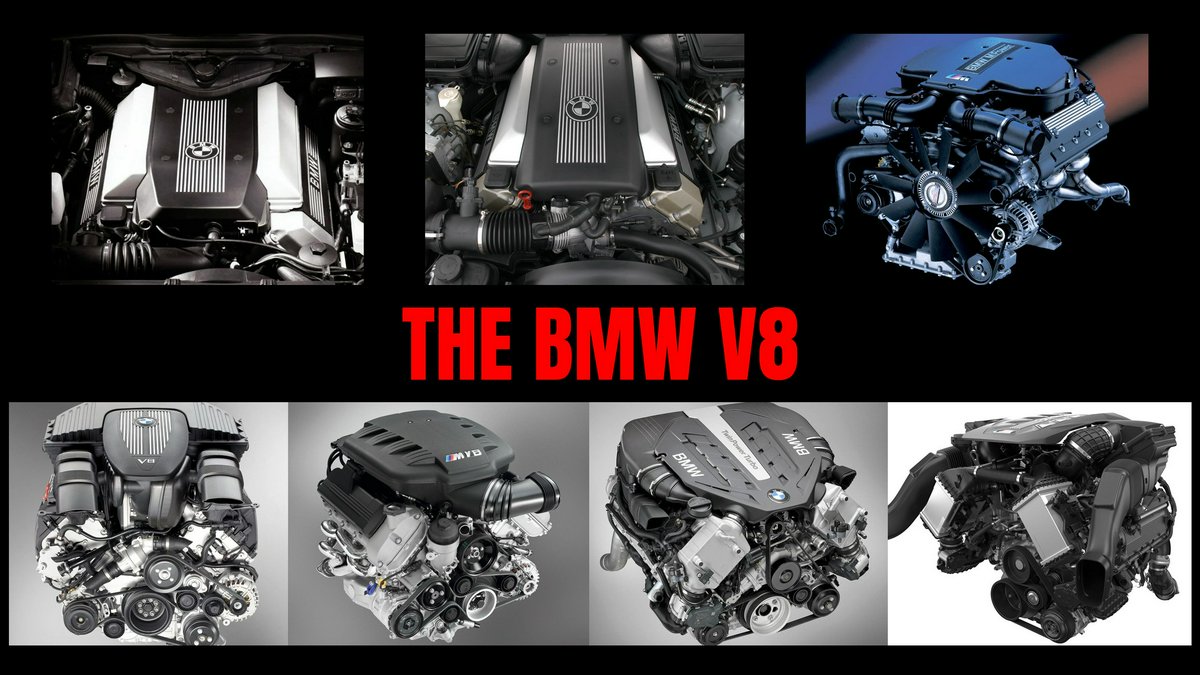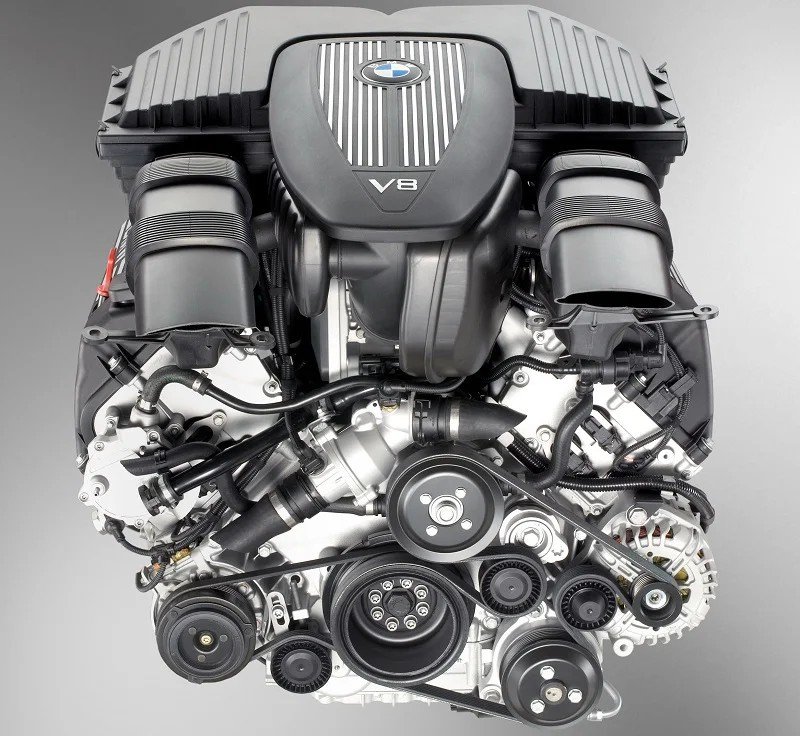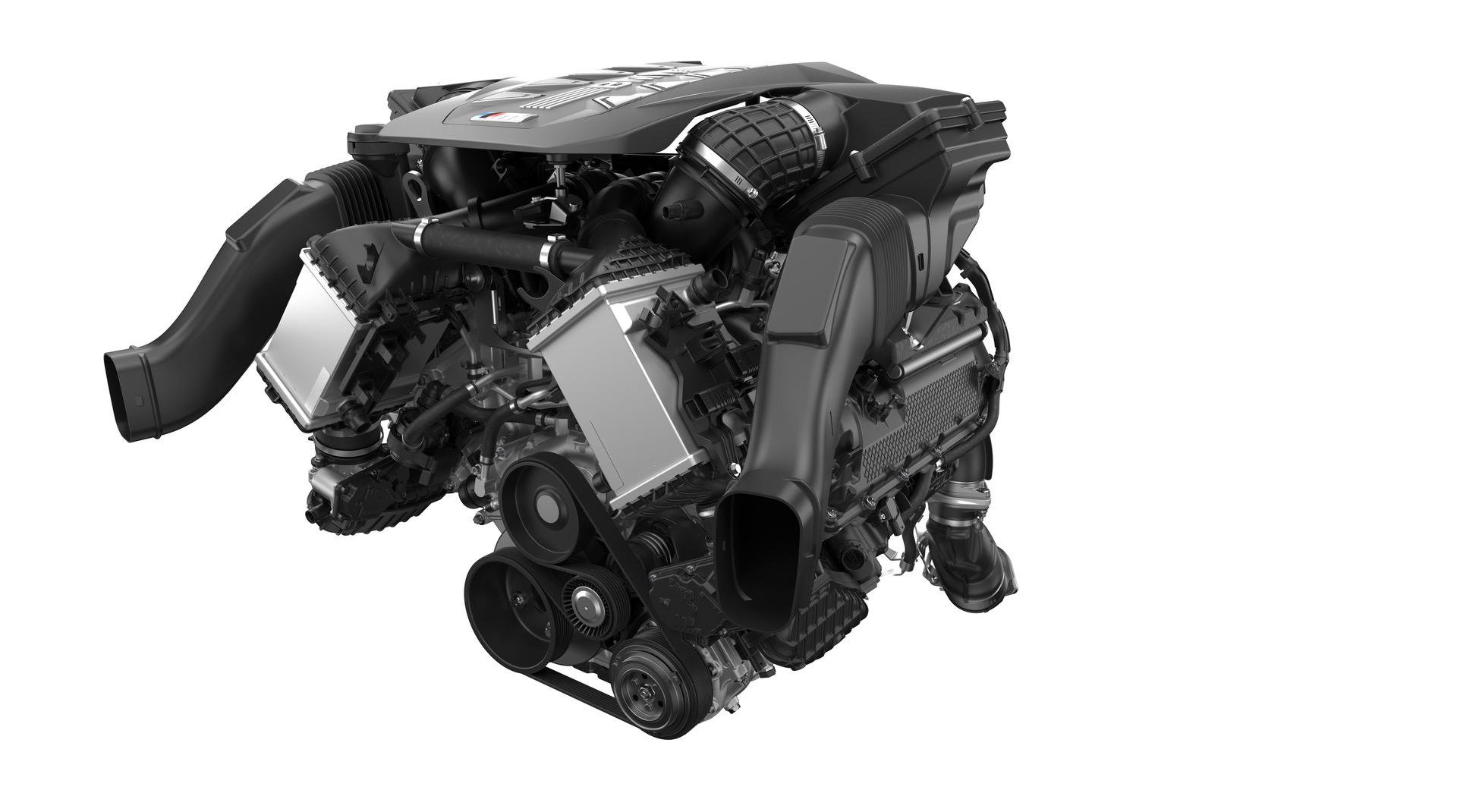techXXX
Evolution of the BMW Petrol V8
BMW has always made some performant and characterful, if fragile, V8s. Today, I go over the evolution of seven BMW V8s over four generations in terms of construction, performance, reliability, and applications. In the end, I rank them into three tiers.

BMW is the one automaker with a reputation of never getting the V8 right. Nevertheless, it has always made some performant and characterful, if fragile, eight-pot powerplants. Today, I go over the evolution of seven BMW V8s over four generations in terms of construction, performance, reliability, and applications. In the end, I rank them into three tiers.

M60
- 1992-1996
- 3.0L / 4.0L
- DOHC, NA
- Nikasil, closed deck
- 30i, 40i
The M60 was BMW’s first V8 after decades. Intended to compete with the Mercedes M119, it similarly features an all-aluminum construction with DOHC heads as well as duplex timing chain, though the M60 has Nikasil coating on the cylinder bores, a closed deck crankcase, and no variable valve timing. The M60 also uses magnesium valve covers and plastic intake manifold.
The M60 is noted for its linear power delivery and robust build. It caused BMW much problem with its Nikasil coating damaged by fuels with high sulfur contents, as found outside Europe, though as sulfur level in fuels found in developed economies lowered, thanks to increased environmental awareness, Nikasil coating is no longer a concern today.

M62
- 1995-2005
- 3.5L / 4.4L / 4.6L
- DOHC, NA, VANOS
- Alusil or Nikasil, closed deck
- 35i, 40i
The M62 was an evolution of the M60 with increased displacement. Some early M62s still used Nikasil coating, though most units were converted to the Alusil process, which as I detailed in a previous blog has proven to be less durable but was certainly safe from high-sulfur fuels. A main difference from the M60, and the Achilles’ heel of M62’s long-term reliability, was the move to simplex timing chain without an idler gear. With the 1998 M62TU, BMW introduced VANOS variable valve timing for the intake cams as well as electronic throttle.
The M62 was appreciably more powerful than the M60, though torque fall-off from the peak is apparent. Apart from the aforementioned timing chain and chain guide problems, as well as the usual fluid leaks, the M62 is considered a reliable engine.

S62
- 1998-2003
- 4.9L
- DOHC, NA, Dual VANOS
- Alusil, closed deck, semi-dry sump
- M5
The S62 was the final refinement of the M60/M62 architecture, introduced alongside the M62TU. As the first V8 from BMW M, it features M’s usual individual throttle body setup, duplex timing chain, semi-dry sump lubrication, and double VANOS variable valve timing. Naturally, the S62 uses a forged crankshaft.
The S62 delivered impressive performance and is considered the last classic BMW V8. It is quite robust in general but suffers from several well-known weak points, including timing chain guide, which like the M62, did not have an idler in the valley, rod bearings, and the VANOS system, apart from the usual leaks.

N62
- 2001-2010
- 3.6L / 4.0L / 4.4L / 4.8L
- DOHC, NA, Dual VANOS, Valvetronic, DIVA intake till 2005
- Alusil, open deck
- 35i, 40i, 45i, 50i
The N62 introduced the world’s first continuously variable-length intake manifold and was the first V8 to feature BMW’s Valvetronic. Double VANOS also found its way to the N62. This V8 still uses an Alusil block, but now with an open deck design. It has two timing chains, one for each bank, which addressed its predecessor’s timing chain guide problem. In 2005, BMW introduced a technical update that replaced the continuously variable-length DIVA intake manifold, which was proven highly problematic, to a two-stage DISA intake manifold, similar to what was found in Mercedes and Audi V8s of the time.
Thanks to its combination of unique technologies, the N62 was more powerful than other German V8s of its time and considerably more efficient. The N62, especially the TU variant, is reasonably reliable. Main weak points include valve stem seals, coolant transfer pipe, and alternator bracket seal. It is often said that replacing the OE thermostat with a lower temperature one helps seals last a lot longer.

S65
- 2007-2013
- 4.0L / 4.4L
- DOHC, NA, Dual VANOS
- Alusil, closed deck
- M3
The S65 was a racing-inspired engine derived from BMW’s S85 V10. As such, it features individual throttle bodies, semi-dry sump lubrication, and ionic current knock sensing. The main differences are the elimination of the troubling high pressure VANOS system and the introduction of two duplex timing chains.
Thanks to high-flowing heads, the S65 is very peaky, with almost linear power delivery to over 8000 rpm. Hence, even though the S55, its inline-6 successor, is more powerful and more tunable, many enthusiasts prefer the raw, visceral approach that the S65 makes power. A somewhat robust engine, especially without the S85’s VANOS issues, the S65’s biggest weak points are its rod and main bearings, with throttle actuators being a distant third.

N63 / S63
- 2008-
- 4.4L
- DOHC, biturbo (hot), DI, Dual VANOS, Valvetronic from 2012
- Alusil till 2018, iron coating thereafter, closed deck
- 50i, M5, M6, M8, X5 M, X6 M, 2023+ Range Rovers
Last and certainly least is BMW’s N63 direct-injected hot-biturbo V8. At its launch in 2008, and probably till this day, the N63 was the world’s most complex internal combustion engine for a passenger car. Unlike Mercedes with its M278, BMW had the good sense to come back to a closed deck block with the N63. In 2012, the N63TU added Valvetronic, switched to forged crankshaft, and moved away from piezo-electric high-precision injection (HPI) to solenoid valve high-pressure injection (HDE). This bumped output significantly. I have compared various iterations of the N63 engine in a previous blog, so it suffices to say that further updates after 2012 were minor in comparison.
The S63 is the high-performance variant that used a forged crankshaft since its original form in 2009. A feature unique to the S63 in the industry till this day is the use of cross-bank exhaust manifolds: this feature allows an even 180-degree rotation between exhaust pulses for each turbocharger, increasing responsiveness and efficiency.
The N63, especially after 2012, is noted for its high torque and high responsiveness. The S63 further extends the torque curve and is surprisingly linear for a turbocharged engine. The problem with the N63 and S63 has always been their horrendous reliability and insane complexity. Main weak points include rod bearings, timing chain, low temperature coolant circuit, fuel system, and valve stem seals.

S68
- 2022-
- 4.4L
- DOHC, biturbo (hot), DI, electronic Dual VANOS, Valvetronic
- Iron coating, closed deck
- M60i, M5, XM, X6 M
As BMW moves away from large displacement internal combustion engines, it is reserving the V8 to its “M” models. The S68 is the mild hybrid version of the N63/S63. The main difference from late model S63 is the adoption of electronic VANOS and the 48-volt system. While undoubtedly even more powerful and responsive, the S68 comes literally with some baggage that will most likely result in even poorer reliability, making it the ultimate disposable engine.
Tier List
Tier 1: S62, S65
Tier 2: M60, M62, N62
Tier 3: N63, S63, S68
Tier 2: M60, M62, N62
Tier 3: N63, S63, S68



